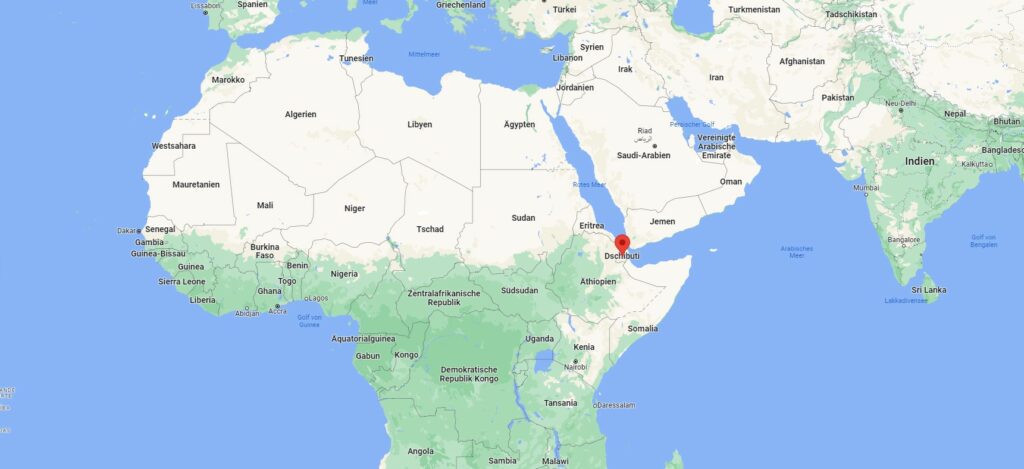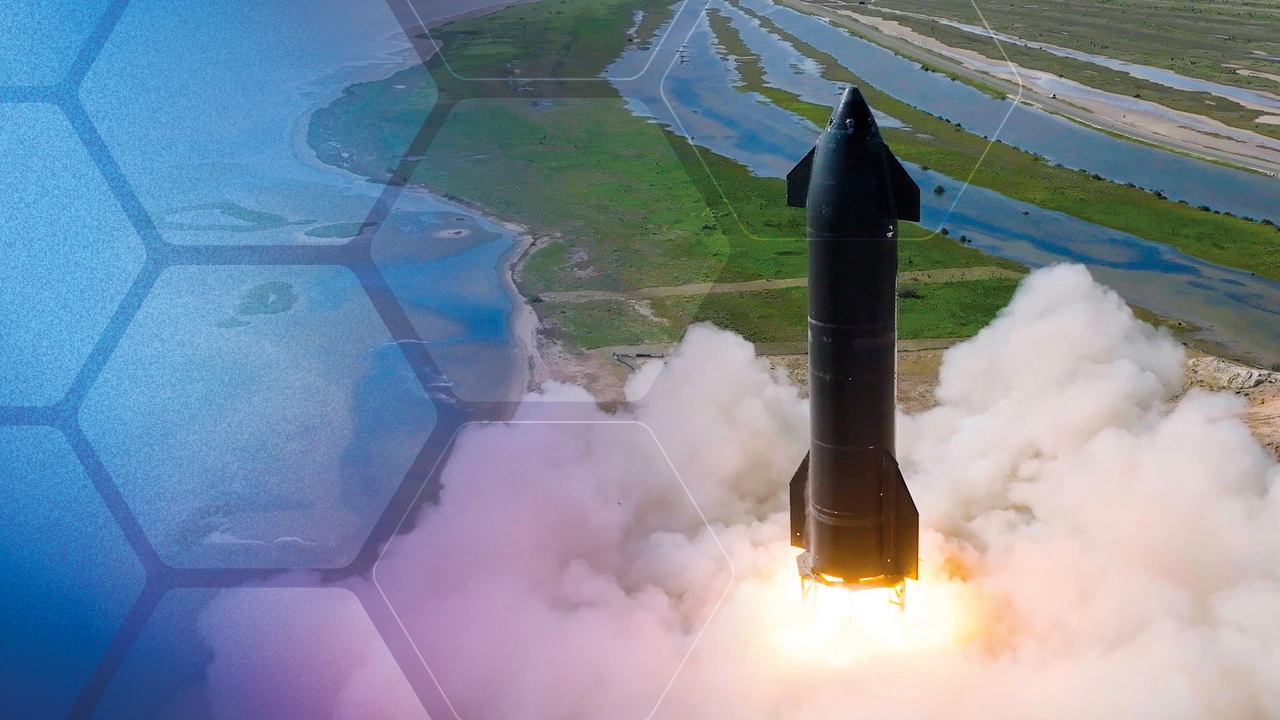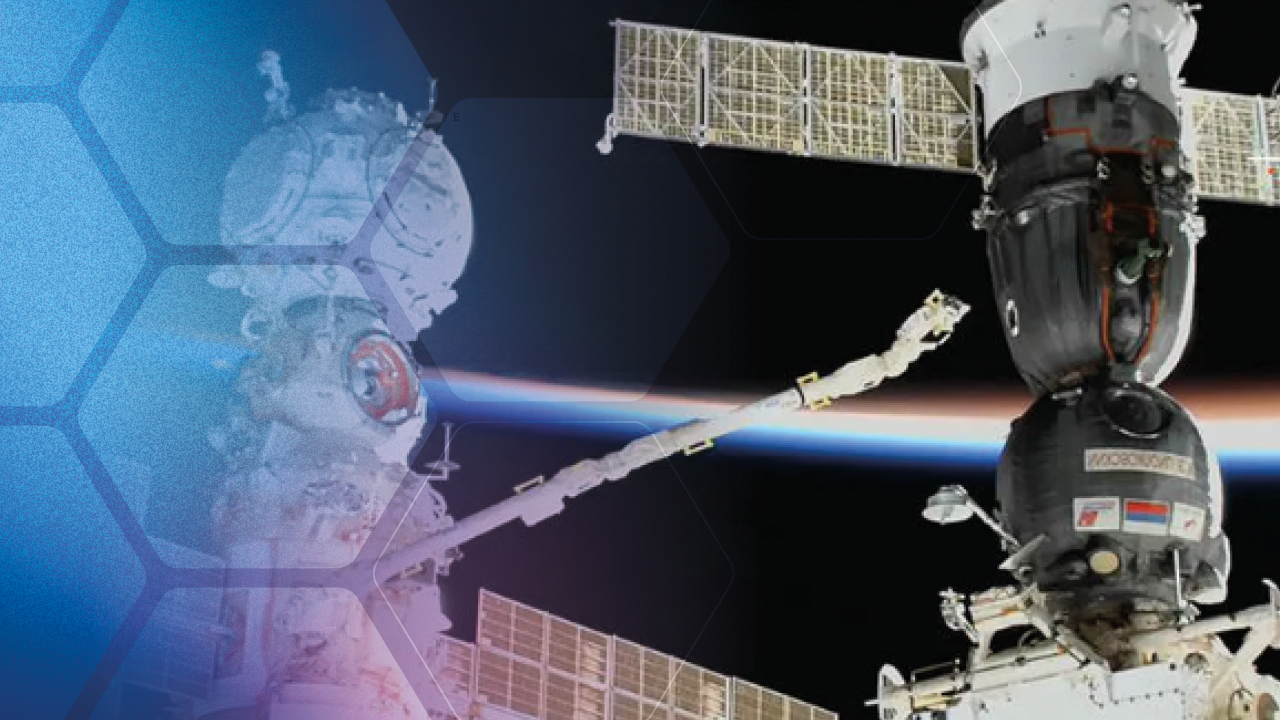
Senkrechtstarter News 03/2023
This Space News was published on Mon, 23.01.2023 – 19:42 CET in collaboration with SenkrechtstarterLast week's rocket launches (USFF 67 - SpaceX Falcon Heavy, GPS III SV06 and Starlink Group 2-4 - Falcon 9 Block 5)
ABL releases details of failure
ESA inaugurates first launch site on European terrain
Djibouti to get Chinese rocket launch site
Soyuz MS-22 at the ISS being stripped for return flight by crew on Soyuz or Dragon
SpaceX conducted over 1000 engine tests in 2022
US Air Force orders development of planning tool for suborbital point-to-point rocket cargo missions
Last week's rocket launches
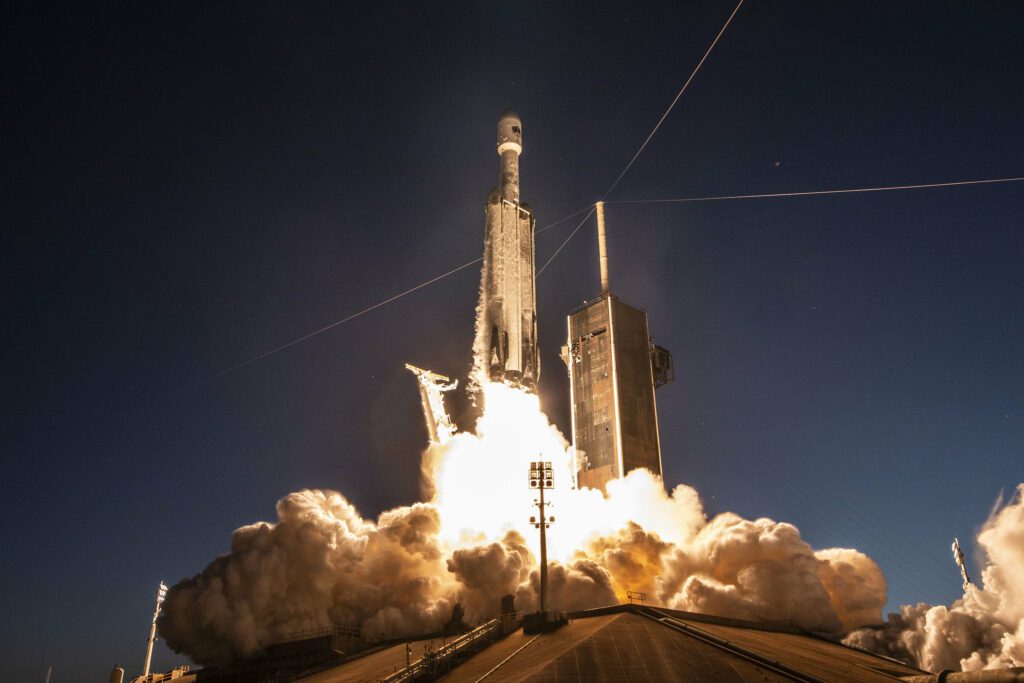
USSF-67 | Falcon Heavy | 15.01.2023, 23:56 MEZ
LC-39A, Kennedy Space Center, Florida, USA
SpaceX launched a Falcon Heavy rocket on Sunday 15th January just before midnight (German time). After a picture-perfect launch, the two boosters returned to LZ-1 and LZ-2 in Florida, with the core stage expendable. The reason for this was that all the power was needed for the direct injection of the payload into geostationary orbit, which is a particular challenge for orbital launch vehicles.
Four additional Falcon Heavy missions are currently scheduled for 2023. 1) ViaSat in March, 2) Space Force USSF-52 in April, 3) a commercial mission for EchoStar in May and 4) the Psyche asteroid mission for NASA in October.
GPS III SV06 | Falcon 9 Block 5 | 18.01.2023, 13:24 MEZ
SLC-40, Cape Canaveral SFS, Florida, USA
On Wednesday 18 January, SpaceX launched a GPS-3 satellite for the US government from Cape Canaveral using a Falcon 9 rocket.
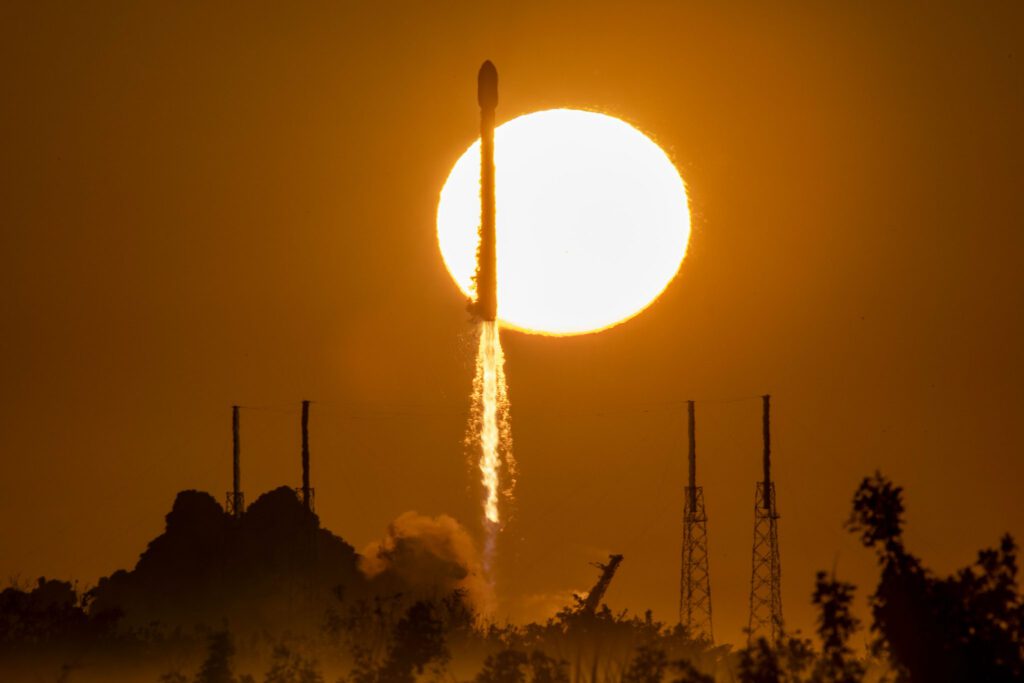
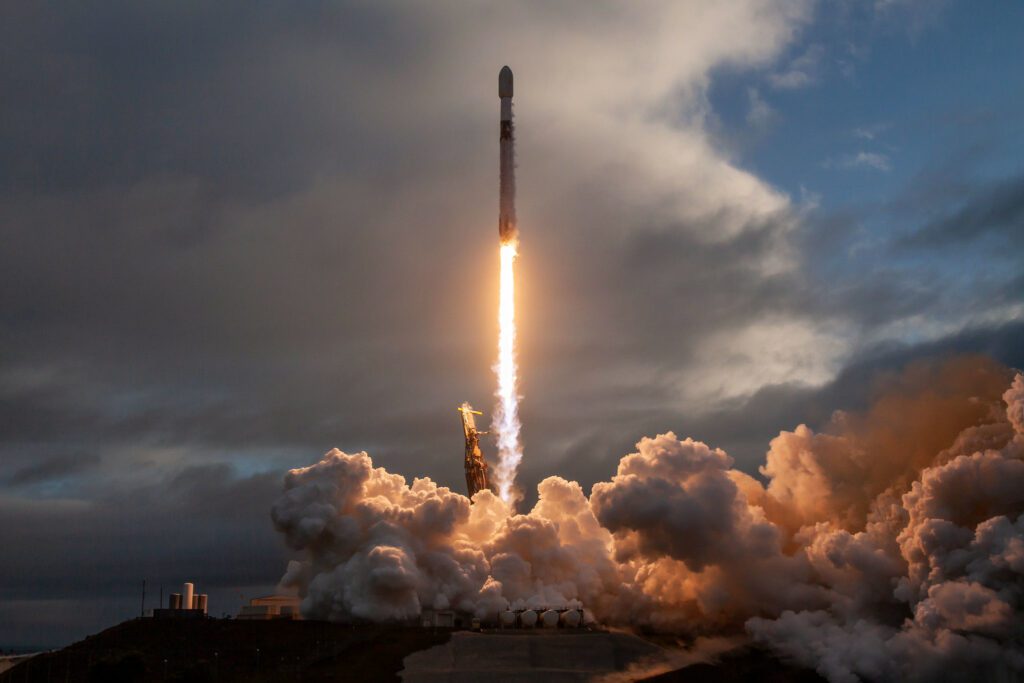
Starlink Group 2-4 | Falcon 9 Block 5 | 19.01.2023, 16:43 MEZ
SLC-4E, Vandenberg SFB, California, USA
On Thursday 19 January, SpaceX launched another batch of Starlink internet satellites into LEO (Low Earth Orbit) on its Falcon 9 rocket. The launch site was Vandenberg Space Force Base on the west coast of the United States.
ABL releases details of failure
ABL Space Systems on Wednesday released a report on the January 10 failure of its RS1 launch vehicle. The rocket's first stage experienced a "complete loss of power" about 11 seconds after liftoff during its maiden flight, causing all nine of the rocket's main engines to shut down simultaneously.
"Shortly before a power failure aboard the rocket, several sensors began to fail one after another. This indicates that an unintentional fire spread to the avionics and then caused the entire control system to fail."
The rocket hit the ground about 20 meters from the launch site. "Approximately 95 percent of the vehicle's total propellant mass was still on board, causing a high-energy explosion and blast wave that damaged nearby equipment and facilities." ABL has launched an investigation into the failure. According to ABL, there is some visual evidence of fire or smoke near the Quick Disconnect. The second RS1 rocket is fully assembled and ready for testing. However, the results of the anomaly investigation are needed to determine a launch schedule.
ESA inaugurates first launch site on European terrain
On January 13, 2023, Rocket Factory Augsburg announced its partnership with the Scottish spaceport SaxaVord. This includes exclusive access to the Fredo launch pad from which the RFA ONE will be launched.
On the same day, ESA, together with Swedish and European politicians, inaugurated a new rocket launch site at the Esrange Space Center in Kiruna, northern Sweden. Sounding rockets and student rockets, such as HyEnD, will be launched from the site. Starting in 2023, orbital rockets will also be launched from Esrange. It is not yet clear which ones, since Orbex and RFA will launch from Scotland and Isar Aerospace from Norway. It is true that the technology demonstrator Themis, developed by the Ariane Group for ESA, is to perform initial short tests at Esrange. However, the main tests will take place at Kourou in French Guiana. Moreover, Themis is only a suborbital demonstrator.
Another launcher comes from a wholly owned subsidiary of the Ariane Group: the French company Maia Space. This start-up is developing a small reusable launcher. However, Maia is not expected to make its first orbital flight until the end of the year. It is not yet known whether it will be launched from Esrange.
Djibouti could get Chinese rocket launch site
In calendar week 3 of 2023, a spaceport was also announced in Africa. Djibouti's president, Ismail Omar Guelleh, signed a memorandum of understanding on technological cooperation with China's Hong Kong Aerospace Technology. The agreement provides for the construction of a satellite and rocket launch site and related infrastructure. The cost is estimated at $1 billion. The launch site is expected to be operational by 2027.
Djibouti is located near the equator in East Africa. With an area of 23,200 km², the country is only about the size of Mecklenburg-Western Pomerania. The presidential republic is striving to become an industrial center with the help of Chinese loans.
Soyuz MS-22 at the ISS being stripped for return flight by crew on Soyuz or Dragon
The Soyuz MS-22 mission was scheduled to return to Earth this spring. But after a micrometeoroid impact in December, the spacecraft's external cooling circuit was damaged. As a result, the spacecraft cannot dissipate enough heat to keep all systems and a crew of three alive for an extended period of time. After only a few hours, the temperature and relative humidity could rise to levels lethal to humans. Returning to Earth with this spacecraft is considered impossible. For the crew of the International Space Station ISS, this means that they will remain on board longer than planned.

This is not a problem in principle, but it does mean that there are no seats available in the event of a necessary evacuation of the space station. Meanwhile, NASA has asked SpaceX for help in finding a solution. And the Russian space agency Roskosmos has not been idle either: It has decided to send the next Soyuz MS-23 to the ISS on February 20 without a crew. This will allow Russian cosmonauts Sergey Prokopyev and Dmitri Petelin and US astronaut Frank Rubio to return home safely.
Improvisation until February 2023
In order to have an evacuation option until the arrival of MS-23, the seat of US astronaut Frank Rubio was removed from the Soyuz MS-22 and "installed" in the Crew Dragon Endurance of Crew 5 (SpaceX). A place was found in the cargo area of the pressurized cabin under the 4 regular seats. The seat was secured with straps to the cargo attachment points. As soon as the Soyuz MS-23 arrives at the International Space Station ISS, disassembly will begin. First, all the custom seats from MS-22 will be removed and then installed in MS-23. Rubio's seat will then be removed from the SpaceX Crew Dragon Endurance.
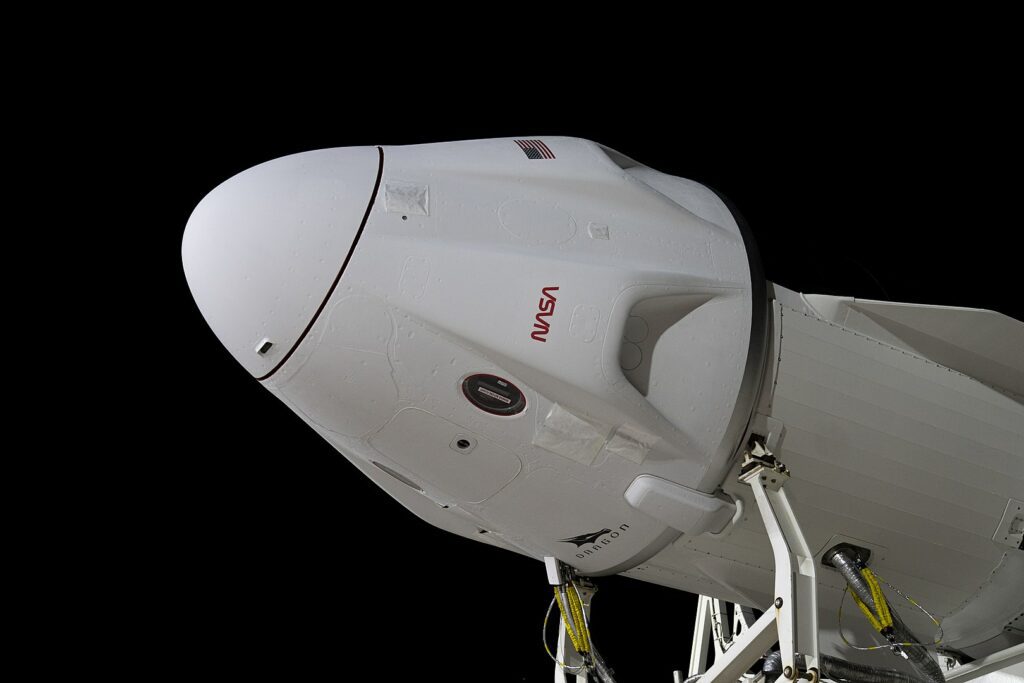
This solution is reminiscent of the improvisational talent of NASA engineers during Apollo 13. In April 1970, a tank of supercritical oxygen exploded in the service module of the Apollo spacecraft en route to the moon. The crew had to move to the lunar module, but its CO2 absorber was only designed to hold 2 people for a maximum of 45 hours. So a team at Mission Control Center in Houston created an adapter using items available on board. It consisted of tubes, duct tape, covers of manuals, and a sock, among other things.
Replacement team no earlier than fall 2023
Because the next Soyuz spacecraft after MS-23 will not be ready to fly until the fall, the launch of a backup crew has been delayed. Currently, Roscosmos and NASA do not expect MS-22 to return with Soyuz MS-23 until after September 27, 2023. Incidentally, the incident could make Frank Rubio the longest continuous American in space. However, he will not beat the current world record held by cosmonaut legend Valery Polyakov, who spent 438 consecutive days on the Mir space station in the 1990s.
SpaceX News

US government could rely on Starshield
While Starlink is currently in the headlines due to decreasing bandwidth due to high demand, there is news about SpaceX's recently announced Starshield project. According to the company, "Starshield is intended for government use, with an initial focus on three areas: Earth Observation, Communications, and Hosted Payloads." Explicit mention is made of working with the U.S. Department of Defense, which appears to be the project's primary customer. That's because, as SpaceNews.com reports, the Department of Defense is under tremendous pressure to expand its capabilities. Apparently, SpaceX has now backed away from its original plan to make Starlink communications available to government agencies. Instead, Starshield will be built as an independent service. With an existing production capacity of over 120 Starlink satellites per month, this would be quite possible.
SpaceX tests an average of 3 engines per day
But it's not just satellites that SpaceX is building very quickly and in large numbers. As NASA-Spaceflight announced on Twitter this week, its McGregor Live service has already filmed more than 1,000 engine tests since it went live on YouTube on April 28, 2022. That's an average of more than three per day.
McGregor is the test site for the Falcon 9 and Falcon Heavy Merlin engines, as well as the Starship Raptor engines.
US Air Force orders development of planning tool for suborbital point-to-point rocket cargo missions
When asked by a Twitter user how many Starships and Boosters SpaceX plans to produce this year, Elon Musk replied, "About five stacks." How many of each of these five boosters and Starships will fly is currently unclear. This is because SpaceX is currently only allowed to perform five orbital flights with the Starship - regardless of a pending launch permit - according to an environmental assessment.
Separately, work continues on the Cape Canaveral launch site. It is believed that a Deluge sprinkler system from Florida will be brought to Boca Chica. Originally, SpaceX did not want to use such a noise-reducing water curtain.
One advantage of the Starship that Elon Musk has repeatedly pointed out in presentations is its ability to transport large loads suborbitally. According to SpaceX, this would allow it to reach any point on Earth within a few hours. This capability is particularly interesting for the military, as it allows them to move heavy equipment quickly.
What has long been suspected behind closed doors now seems to be taking shape. The American conglomerate Raytheon, a major supplier to the Department of Defense, is currently developing mission planning software for the US Air Force. The software is aimed at the use of commercial rockets for point-to-point suborbital transportation. The tool will enable the Air Force to plan, coordinate and execute a rocket cargo mission within hours.



